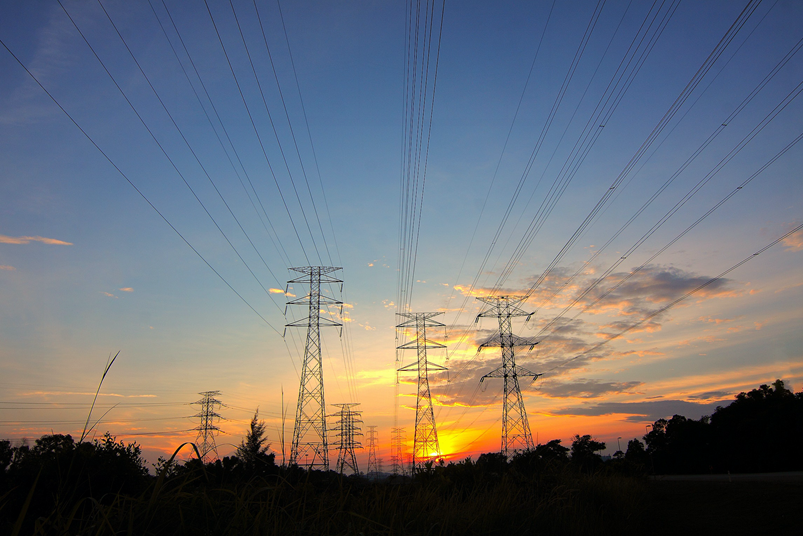Вести
Bidirectional DC DC Converter: A Two-Way Power Transfer Solution
Автор: ZYG Power Module Time: 2023-6-12
A bidirectional DC-DC converter is a power transfer solution that allows for two-way power conversion between two different voltage levels. This type of converter is commonly used in applications where power needs to be transferred bidirectionally, such as in electric vehicles, renewable energy systems, and battery charging systems.
The bidirectional DC-DC converter is a device that converts power from a high voltage level to a low voltage level, or vice versa, depending on the direction of power flow. This is achieved by using a combination of power switches, inductors, capacitors, and control circuitry.
The converter operates in two modes: buck mode and boost mode. In buck mode, the converter steps down the voltage from the high voltage level to the low voltage level. In boost mode, the converter steps up the voltage from the low voltage level to the high voltage level. The direction of power flow determines which mode the converter operates in.
The bidirectional DC-DC converter has several advantages over other power transfer solutions. One of the main advantages is its efficiency. The converter is designed to minimize power losses and maximize power transfer efficiency, which results in less energy wasted and more energy transferred between the two voltage levels.
Another advantage of the bidirectional DC-DC converter is its flexibility. The converter can be used in a variety of applications and can handle a wide range of voltage levels. This makes it an ideal choice for applications where power needs to be transferred bidirectionally between two different voltage levels.
In addition, the bidirectional DC-DC converter is compact and lightweight, which makes it easy to integrate into existing systems. This compact design also helps to reduce the overall cost of the system, as fewer components are required to achieve the same level of power transfer efficiency.

Despite its many advantages, the bidirectional DC-DC converter also has some limitations. One of the main limitations is its complexity. The converter requires a sophisticated control circuitry to ensure that the power transfer is efficient and reliable. This complexity can increase the cost and complexity of the overall system.
Another limitation of the bidirectional DC-DC converter is its susceptibility to electromagnetic interference (EMI). The high-frequency switching signals used by the converter can generate EMI, which can affect other components in the system and reduce overall system performance.
In conclusion, the bidirectional DC-DC converter is a two-way power transfer solution that offers several advantages over other power transfer solutions. Its efficiency, flexibility, and compact design make it an ideal choice for applications where power needs to be transferred bidirectionally between two different voltage levels. However, its complexity and susceptibility to EMI may limit its use in certain applications.
Претходно: Bidirectional DC-DC Converter: A Versatile Power Conversion Solution
Следно: DC DC Converter EX Series: Advanced Power Conversion Solutions
релевантни информации
-
2023-5-14
240V AC to 12V DC Converter: Efficient and Safe Solution for Your Electrical Needs
As technology continues to advance, we rely more and more on electronic devices. However, these devices require a stable and reliable power source. For many applications, this means converting the 240V AC mains power to 12V DC. This is where a 240V AC to 12V DC converter comes in. A 240V AC to 12V DC converter is an electrical device that converts the high voltage alternating current (AC) from your mains power supply into a lower voltage direct current (DC) that can be used to power a wide range of electronic devices. These converters are widely used to power electronic devices such as LED lights, CCTV cameras, and other low voltage devices. There are many advantages to using a 240V...
Погледнете детали -
2023-4-20
How to Build a 120 Volt AC Power Supply for 3 Volt DC Output
If you looking to power a small device that requires 3 volts of DC power, you may be wondering how to build a suitable power supply. One option is to build your own 120 volt AC power supply and use a voltage regulator to step down the voltage to 3 volts. Here how to do it: Materials: - Step-down transformer (120V AC to 12V AC) - Bridge rectifier - Capacitor - Voltage regulator (LM317) - Heat sink - Resistors - Potentiometer - LED - 3 volt DC load - Soldering iron and solder - Multimeter Step 1: Choose a transformer The first step is to choose a step-down transformer that converts the 120V AC input to 12V AC output. Make...
Погледнете детали -
2023-6-2
Bidirectional DC DC Converter: A Solution for Efficient Power Transfer
In today's world, power electronics is playing a vital role in all aspects of our life. Power electronics refers to the control and conversion of electrical power from one form to another using electronic devices. One of the most important applications of power electronics is power conversion, where electrical power is converted from one form to another, such as AC to DC or DC to AC. In this context, bidirectional DC DC converters have gained significant attention in recent years due to their ability to transfer power efficiently between two DC systems. What is a Bidirectional DC DC Converter? A bidirectional DC DC converter is a power electronic circuit that allows power to flow in both directions between two DC...
Погледнете детали -
2023-5-14
Converting 110V AC to 12 Volt DC: A Step-by-Step Guide
Converting 110V AC to 12 Volt DC: A Step-by-Step Guide Converting 110V AC to 12 Volt DC is a process that is commonly used in various electronic devices such as radios, televisions, and computers. The process is simple and straightforward, but it requires the use of certain tools and equipment. In this guide, we will take you through the process of converting 110V AC to 12 Volt DC. Step 1: Gather the Required Tools and Equipment To begin with, you will need certain tools and equipment to convert 110V AC to 12 Volt DC. The following are the tools and equipment that you will require: - A transformer - A rectifier - A capacitor - A voltage regulator - A...
Погледнете детали -
2023-12-1
Top-Notch Efficiency and Flexibility: Introducing the 850-Watt Modular Power Supply
In today's digital age, technology is advancing at an unprecedented pace. As a result, the power demands of our devices continue to increase. This is where the importance of a reliable and efficient power supply comes into play. Introducing the 850-Watt Modular Power Supply, a cutting-edge solution designed to meet the power needs of even the most demanding systems. Efficiency is a key factor when it comes to choosing a power supply. The 850-Watt Modular Power Supply excels in this regard, offering an impressive efficiency rating of over 90%. This means that it wastes less energy and generates less heat, resulting in a more stable and reliable power source. Whether you are a gamer, a content creator, or a professional...
Погледнете детали -
2023-8-31
AC/DC Power Supply Module: Unleashing Uninterrupted Power for Efficient Operations
An uninterrupted power supply is essential for the efficient operation of various devices and systems. One crucial component that ensures seamless power delivery is the AC/DC power supply module. This module not only converts alternating current (AC) to direct current (DC) but also plays a vital role in regulating voltage levels and maintaining a stable power output. In this article, we will delve into the significance of AC/DC power supply modules and how they contribute to efficient operations across industries. First and foremost, let us understand the importance of AC/DC power supply modules. These modules are responsible for converting the high-voltage AC power from the main electrical grid into low-voltage and regulated DC power suitable for powering electronic devices. They...
Погледнете детали


















